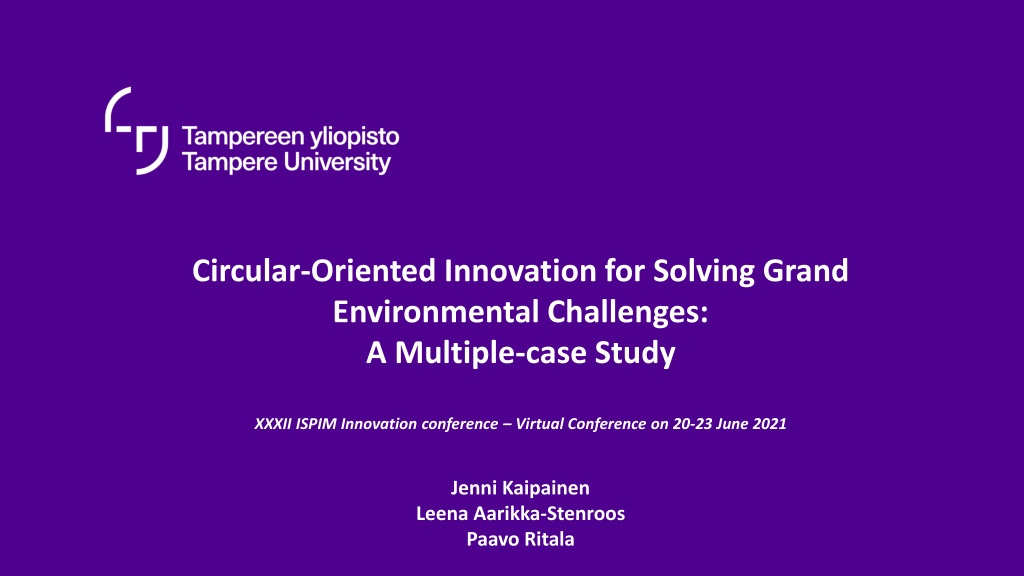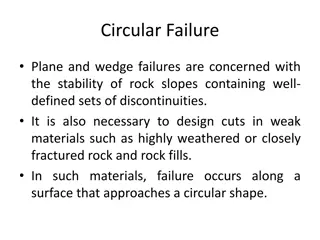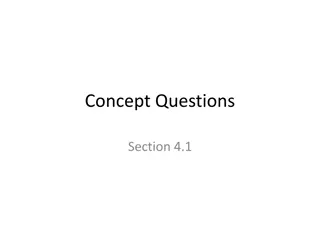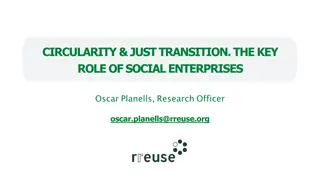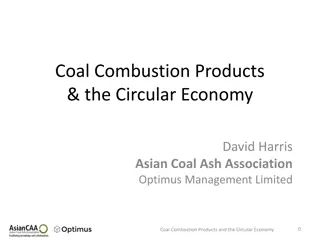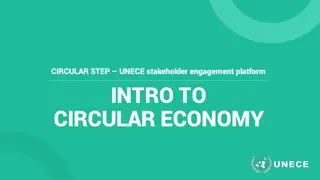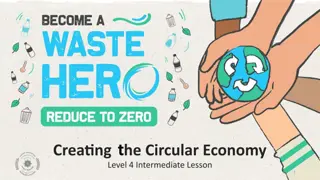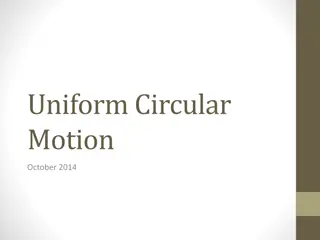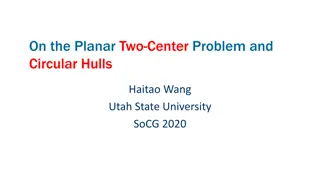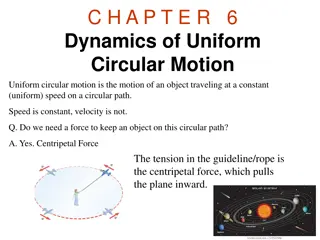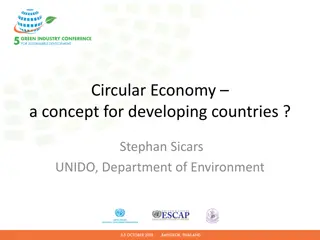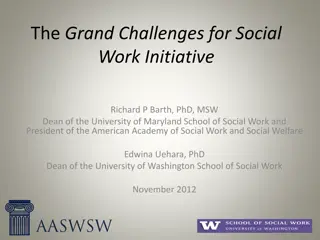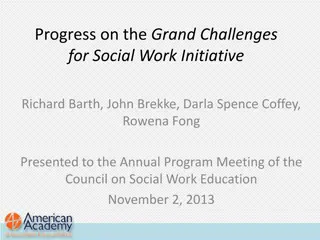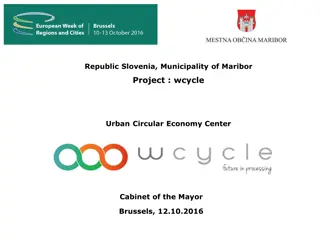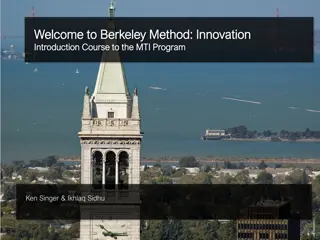Circular-Oriented Innovation for Solving Grand Environmental Challenges: A Multiple-Case Study
This study explores how companies address Grand Environmental Challenges (GECs) through collaborative circular-oriented innovation (COI). It investigates the necessary modifications over time for companies with different initial strategic fits towards GECs. The research aims to enable managers to effectively implement COI processes and impactful modifications, leading to profitable innovation solutions for global environmental issues.
- Circular-Oriented Innovation
- Environmental Challenges
- Strategic Fit
- Collaborative Innovation
- Circular Economy
Download Presentation

Please find below an Image/Link to download the presentation.
The content on the website is provided AS IS for your information and personal use only. It may not be sold, licensed, or shared on other websites without obtaining consent from the author. Download presentation by click this link. If you encounter any issues during the download, it is possible that the publisher has removed the file from their server.
E N D
Presentation Transcript
Circular-Oriented Innovation for Solving Grand Environmental Challenges: A Multiple-case Study XXXII ISPIM Innovation conference Virtual Conference on 20-23 June 2021 Jenni Kaipainen Leena Aarikka-Stenroos Paavo Ritala
Circular Economy Catalysts: From Innovation to Business Ecosystems Studying and advancing the Circular Economy Transition with research-based knowledge, funded by the Academy of Finland www.cicat2025.fi
Background and motivation Grand Environmental Challenges (GECs) companies & collaborative circular-oriented innovation (COI) (de Jesus & Mendon a, 2018; Brown et al. 2021) Need for Multiple gaps Types of companies to best achieve the strategic fit to GEC context (Barczak, 2012)? Modifications needed over time, internally & externally? Practices for successfully managing the full COI processes (de Jesus & Mendon a, 2018)? Business environment with embedded GECs Bad strategic fit Good strategic fit Born circular Circularity adopter Based on Innovation & strategy literature (Garcia & Calantone, 2002; Garud et al., 2013) + CE & sustainability research (Rovanto & Bask, 2020; Adams et al. 2016): | 3 7.9.2024
RQ & Objective Objective Theorizing how innovator companies with different initial strategic fit towards GECs implement their COI processes and various necessary modifications over time Enabling managers to harness the COI & conduct the most impactful internal and external modifications throughout the process to solve global GECs with profitable innovation RQ: How companies address GECs over time via COI and modifications for a strategic fit? | 4 7.9.2024
Methodology Qualitative multiple-case study with 8 pioneer cases. Refining the case sample (expert interviews and initial interviews) Case selection with maximum variation sampling: Circularity adopters vs. born circulars Companies tackling GECs with maximum pragmatic relevance based on the UN SDGs Multi-sourced rich data Inductive, processual analysis approach and application of critical incident technique | 5 7.9.2024
Results Overview Company type Modifications Circular-oriented Innovation processes Technology/process innovation; Incremental product innovation; Business model innovation Circularity adopters Internal: Various modifications needed External: From new value chains and networks to advancing regulatory development and societal discussion Born circular Internal: Not necessary/needed External: Needed particularly when scaling the business up Service and business model innovations; Technology innovations *Emergent finding* CE-identity finder Internal: Not necessary/needed External: Emphasis on communications Incremental product innovation; Technology/process innovations | 6 7.9.2024
Lessons learned - Interaction between - innovation types - innovation process and the changing environment - Innovation acts as a bridge to companies meso- and macro- levels - GEC influence the nature of needed modifications Circular- oriented innovation processes to tackle GECs Modifications driven at the micro-, meso-, and macro- levels depending on their strategic fit - If a poor strategic fit: rethinking internal activities, leading often to radical innovation processes - If a good strategic fit: rethink external activities, likely followed by incremental and radical innovation processes - If a good strategic fit but poor recognition of it: first reflection, then external modifications | 7 7.9.2024
Conclusions & theoretical contribution Key findings: Discovering 3 types of companies with different strategic fit to the GEC-embedded context; Theorizing the empirical patterns of COI processes and their needed to tackle GECs Theoretical contribution: GEC, CE, and sustainability research: Companies role in systemic sustainable and CE transition while tackling GECs (see I igo & Albareda, 2016; Rovanto & Bask, 2020) Innovation management: Processual understanding of innovations and diversity of innovation types that emerge from this process (see Brammer et al., 2019) Strategic management: Companies coping with the development of interconnected innovations and evolving market & societal structures. | 8 7.9.2024
Practical implications & future research Practical implications: Managers: How to pursue profitable innovation and competitive advantage while solving GECs and advancing CE transition; What kind of modifications this requires over time internally and externally. Other meso/macro-level actors: How to get involved in tackling GECs through collaborative COI over time (see Brown et al., 2021). Future research: Extended generalizability for our findings from studies in other cultural contexts Further investigation of CE-identity finders | 9 7.9.2024
Thank you! Thank you! Questions & Comments? jenni.kaipainen@tuni.fi
